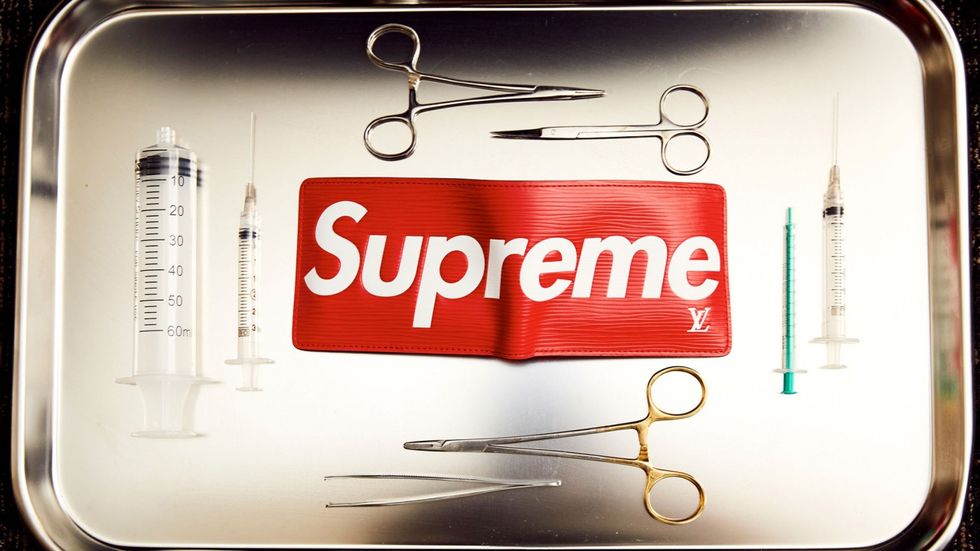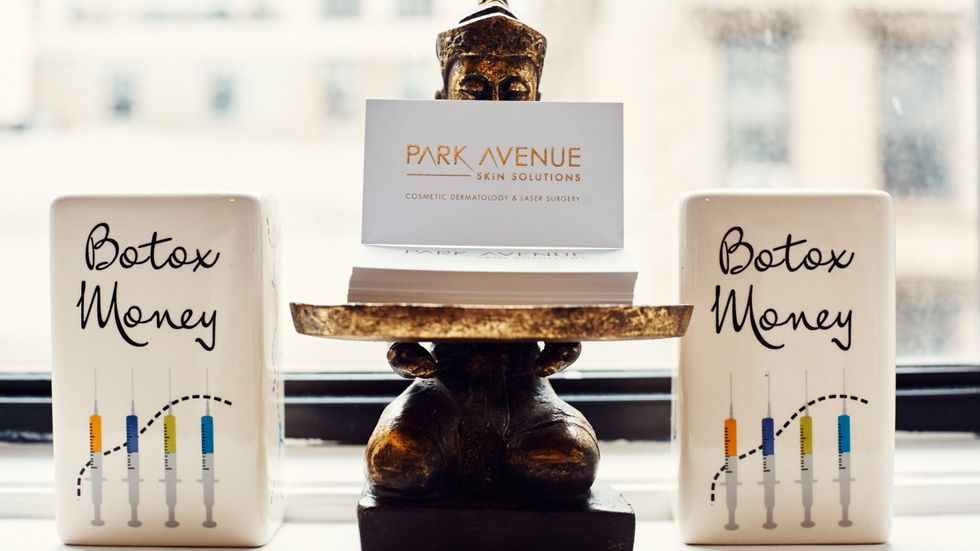Skin
If You’ve Never Gotten Filler, Here’s the Deal
It’s probably not as scary or weird as you think.

18 January, 2019
10 November, 2021
If you’re not immersed in the beauty world and therefore forced to understand dermatology as part of your employment (hello, it’s me), the whole “filler” thing can be kind of confusing. I often have friends who think filler and Botox are kind of the same thing, or that fillers are just for the lips only. The answers are: no, but close, as both use needles, and filler is actually for just about everywhere. Part of the reason it’s confusing is because filler is a category, sort of like eyeliner, that emcompasses multiple types and styles. In addition, filler hides under the skin, and it’s plain hard to visualize something you don’t really see.
Below, we break down what filler is in simple terms, starting from square one. To do so, I called Dendy Engelman, MD, a derm in New York who is one of my favorites and treats big-name faces like Sofia Vergara. For the record, she was also carded at age 42, which means the lady knows what she’s doing.
Here are your filler basics, below.
Below, we break down what filler is in simple terms, starting from square one. To do so, I called Dendy Engelman, MD, a derm in New York who is one of my favorites and treats big-name faces like Sofia Vergara. For the record, she was also carded at age 42, which means the lady knows what she’s doing.
Here are your filler basics, below.

Why get filler?
To look younger. Fillers are gel-like substances injected under the skin to puff up places that start to sag, hence the word “filler.” They also replace volume in areas that tend to hollow out as we age, like your temples and apples of your cheeks. (Look at pictures of young and old people to see the difference in those regions.)
What is it made out of?
Like the eyeliner analogy above, there are different types or “styles” of filler, including hyaluronic acid, calcium hydroxylapatite, and your own fat. These days, the vast majority of filler is done with hyaluronic acid because it’s very safe, the texture of HA feels more like real skin, and it’s temporary. Temporary may sound like a bad thing—filler’s expensive!—but people tend to like this aspect because it’s less scary, just in case you change your mind. HA is a hydrating substance already in your own body, and you’ve probably also seen it in moisturizers—it’s super safe. The companies that make injectable HA (Allergan and Galderma are two) make them in all different densities and consistencies so that you can use a softer style in your lips, for example, than in your cheeks. If you poke around your face, you’ll notice how all those areas naturally feel a little different in their density.
Does it hurt?
Sigh, yes, it does. But like anything painful, it’s super subjective. In our offices, filler users rate the pain anywhere from 0 to 7—lips being particularly painful. This is also pretty dependent on whether you ice your face beforehand or get topical numbing before the injection. The injected substance itself often contains lidocaine (another numbing agent) that eases achiness once it’s in your face. If you get “over-filled,” it can be painful, especially in the lips.

Where can you inject it?
“Almost anywhere,” says Dr. Engelman. And that’s almost true. Currently, there are fillers in the U.S. market that have been approved by the FDA for the cheeks, lips, acne scars, and hands, but doctors are allowed to use it off-label (i.e., try other stuff at their own informed discretion). Doctors around the world share ideas and experiences with each other. The most common areas to use filler off-label are the temples, nose, hairline (for a brow lift), earlobes, under the eyes, along the jawline, in the chin, and across the chest. Sometimes providers will even inject a teeny amount of HA filler all over someone’s face, almost like a super-deep moisturizer—remember, HA is a natural hydrator your body also produces.
What are the risks?
“Most of the risks are transient and what you would expect from a needle, like bruising, swelling, and pain,” says Dr. Engelman. The filler can also be moved around underneath the skin if you push on it too hard before it integrates into the tissue. “For the first two weeks, don’t get a massage with face in cradle or a facial,” she says. The scariest risk, which is extremely rare, is that if an injection strikes one of the arteries that connects to your eye, it can cause blindness. This has been reported to have happened 98 times around the world.
How do I find a reputable provider?
For those of us at Coveteur who get filler, we typically go to doctors and plastic surgeons with accreditations, such as board certification from the American Academy of Dermatology, and Google the crap out of them before we go. However, there are some fantastic nurses out there practicing cosmetic injectables, and it’s perfectly legal for them to do so. For your first time, you might want to spend the extra money to go to an experienced doctor so you know the first time will be good. (Know what we’re sayin’? *winky face*) If you’re considering a provider, read all their reviews, and look for before-and-afters on their site that are of their own work and of high quality (i.e., consistent lighting and head positions). We suggest starting with the American Academy of Dermatology website and cross-checking that with recommendations from trusted friends.

Is it reversible?
Only if it’s HA. A counter-injection called hyaluronidase can dissolve HA fillers. It can be used right away, but can take up to two days to fully dissolve.
How much does it cost?
The cost mostly varies by region. In New York, with a highly popular, reputable, and experienced dermatologist like Dr. Engelman, the cost is $900 to $1,400 per syringe of filler—and you may need more than one syringe. In the midwest, the price may be more like $450 to $750 per syringe. This is why a consult is important, and visiting with a dermatologist who makes you feel comfortable so you can say no if the cost doesn’t work for you or if you change your mind. Think of it this way: A really talented derm won’t be desperate for your business and will just want you to be happy and comfortable in their care. And as for Groupons and other promotions, we love a sale, just not when it comes to cosmetic dermatology. Dr. Engelman suggests breaking down the proposed cost by the number of months the filler will last. “If it’s about $100 a month to look how you’d like to, it might be totally worth it,” she says.
How long does it last?
“Most of them now last for at least a year, but some last up to 18 months,” says Dr. Engelman. Different fillers have different lifespans before your body absorbs and processes it. Each person also “metabolizes” the substances slightly differently, too. A few types of filler contain permanent substances that stay in your body sort of indefinitely.
If you want to do a little more homework, check out some of the more popular fillers on the market and what they’re about: Juvederm, Restylane, Radiesse, Sculptra, Bellafill.




